 the Bee Lucks Be.
the Bee Lucks Be.
 the Bee Lucks Be.
the Bee Lucks Be.
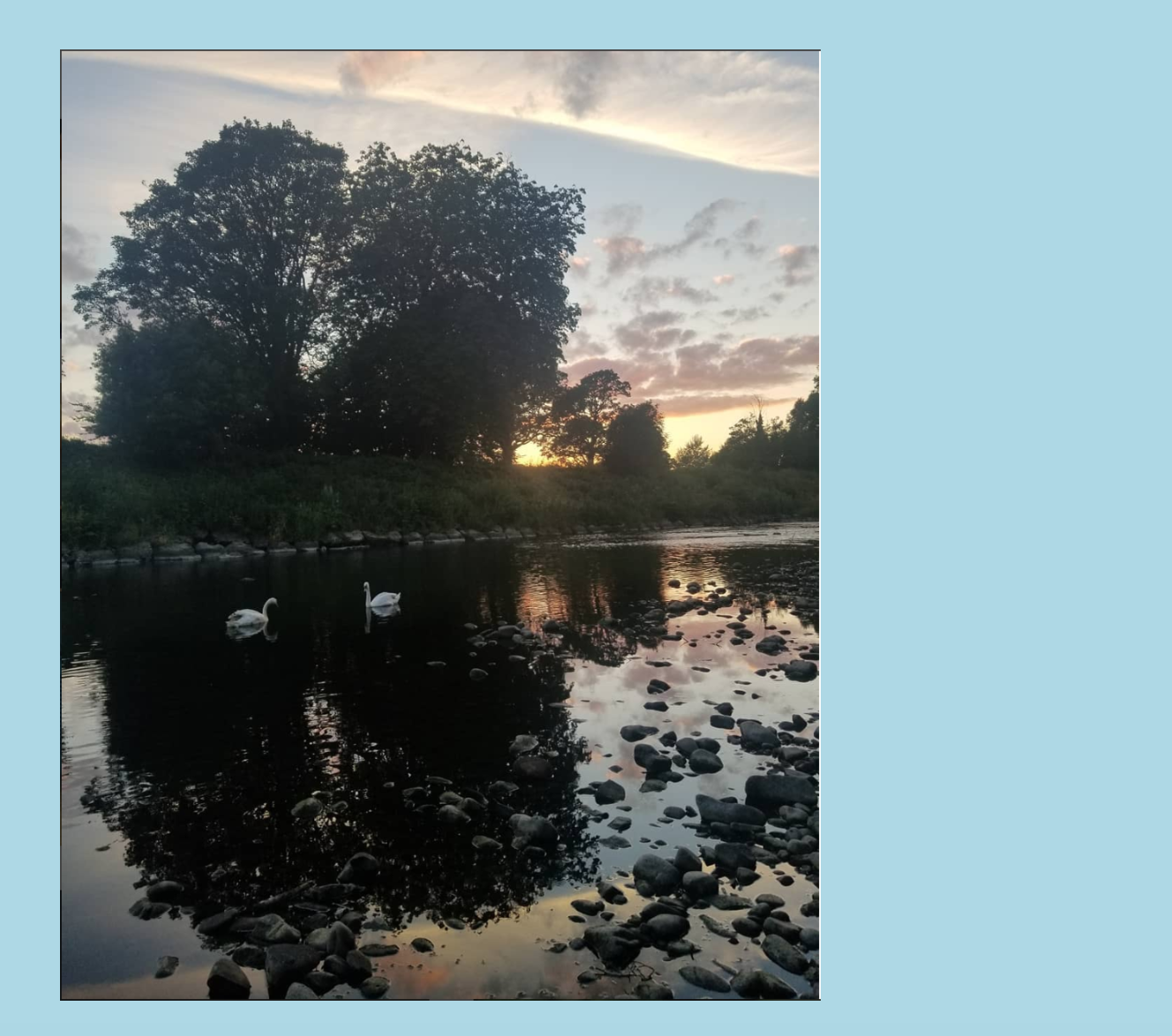
The photos for this story are from my personal instagram account, @beccalucks, and from a private tourism album of my cousin, Oscar Fricke. He is excited I have been doing family tree research and has given wholehearted permission for me to use his photos. I also did a bunch of my research by cross-referencing information from public records using ancestry.com with family stories and records. A few screenshots from ancestry.com show some of those findings. All told, I was able to trace my Welsh ancestry back to the 1630's.
Well, I exist. And therefore they were not obedient.
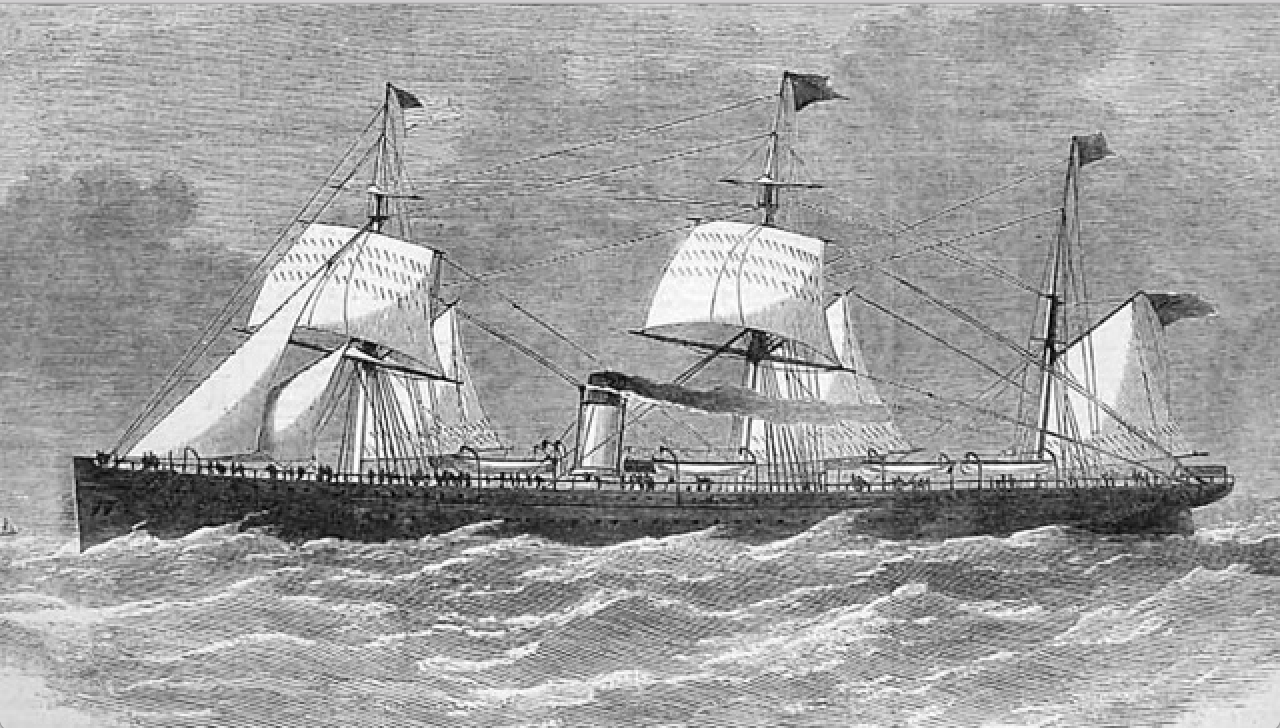
Anne (Williams) Thomas and Allen Lloyd Thomas boarded the SS Abyssinia in Liverpool, operated in 1883 by the Liverpool and Great Western Steamship Company, for America. According to public records, the journey took 12 days. Anne and Allen would return by sea to visit Wales a few years later when they had already had two children (Trevor and Margaret), but they returned back to California shortly after.
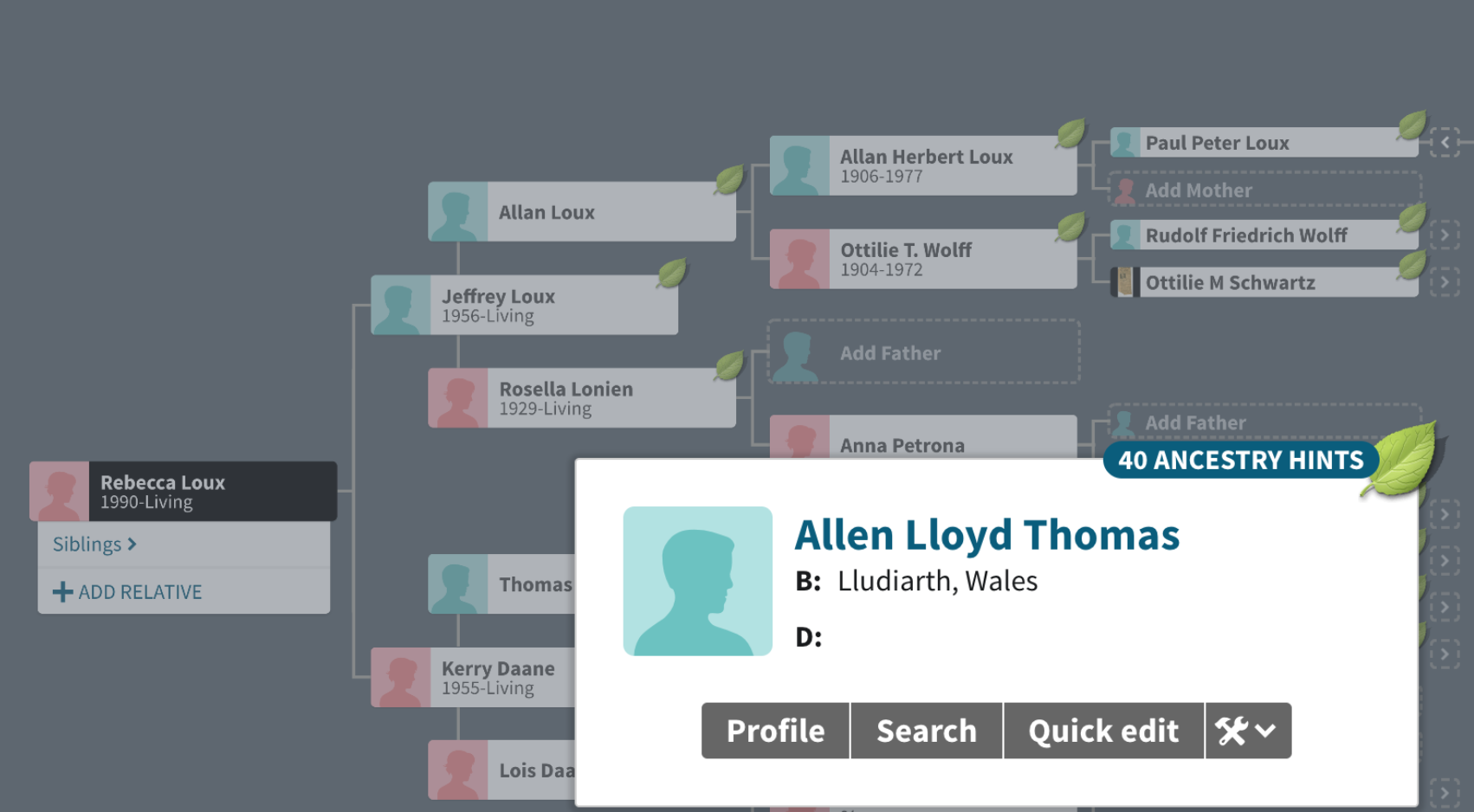
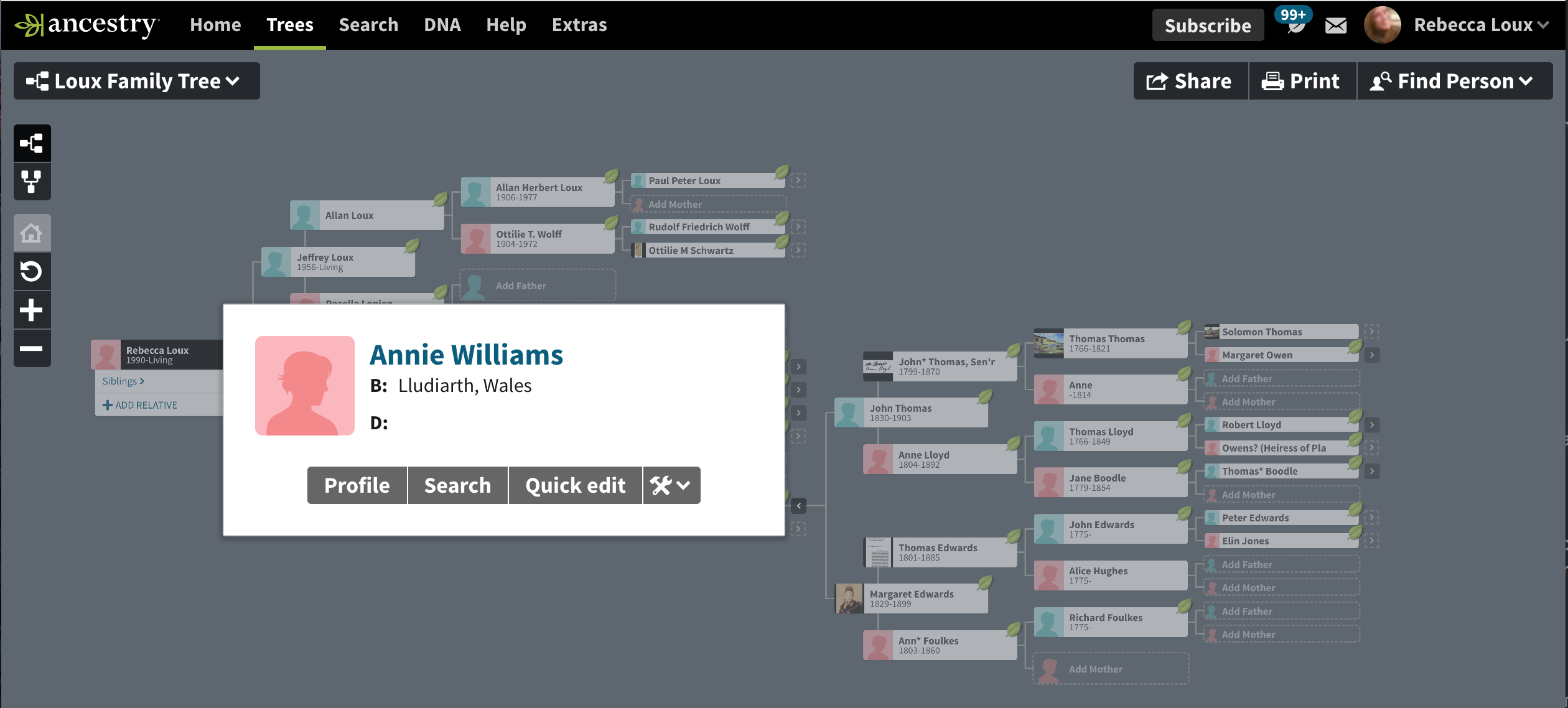
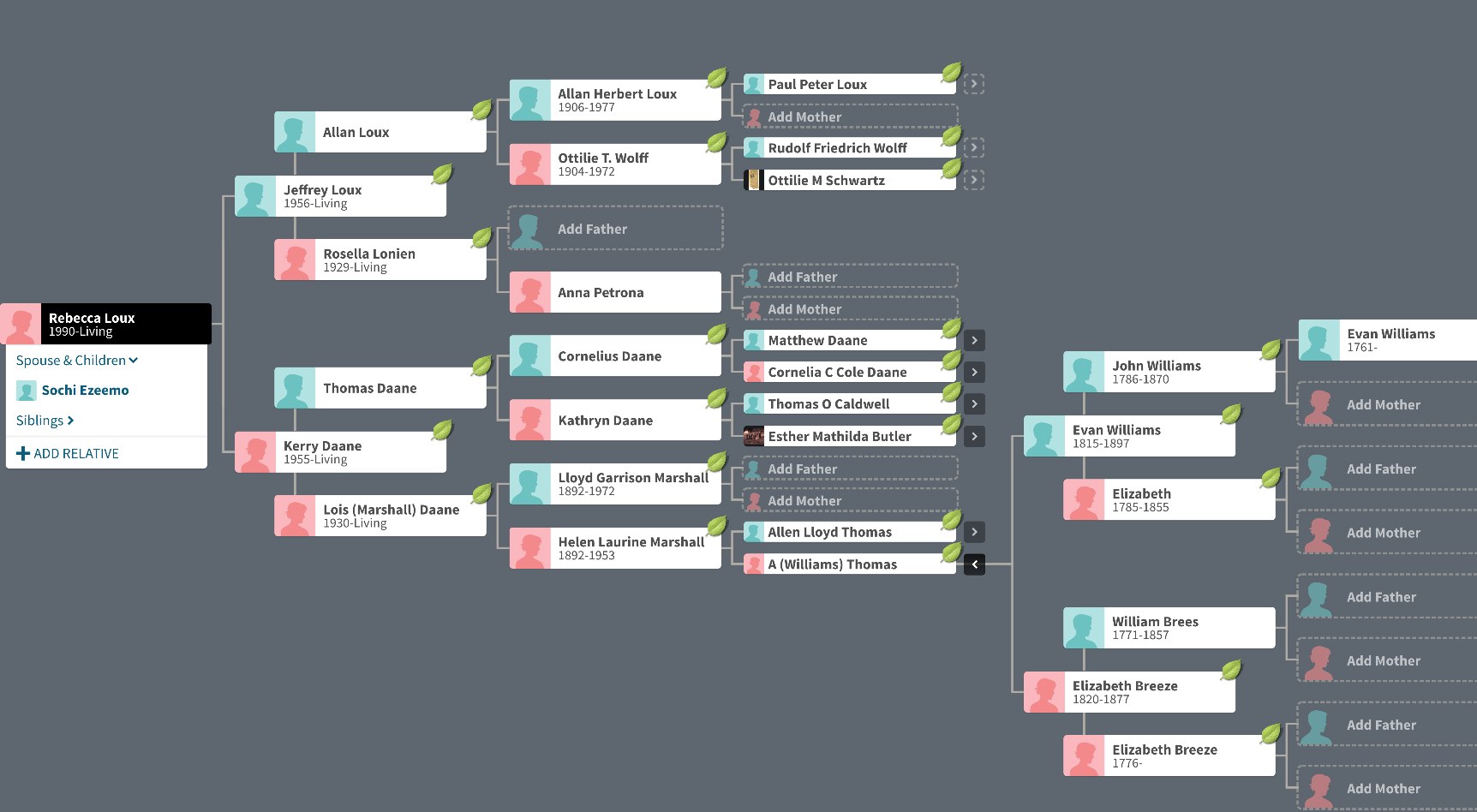
According to my maternal Grandmother Lois Daane, it turns out that Annie, my great-great-grandmother on her side of the family, was considered by my wealthy maternal ancestors to be too far beneath my great-great-grandfather Allen Lloyd in social rank for them to get married. As you can see in the viz from ancestry.com above, there are 40 possible ancestry hits for Allen Lloyd and I was able to confirm likely connections on his side back to 1637 in Glyn Ceiriog, Denbighshire where a Lewis Thomas had a baby with an unknown woman. Yet public records show nothing further for Annie than her grandfather Evan Williams (b. 1761, likely in Llanfihangel, Montgomeryshire in northern Wales). He was my 5th great grandfather. I was unable to find any more information about her history than family stories.
"I am always amazed at the information that Oscar has been able to find," my Grandmother Lois said. She pointed out that it was curious that they sailed rather than using a steam vessel, which was already commonplace at the time period. She expressed surprise too that they were able to make the return journey and with two young children just a few years later.
She continued: "So much of the information we are have learned about Anne Williams and her family is because Shirley and Roger signed the guest book at the church in Llanfihangel in 1979, Kathleen found it there, wrote to Shirley, and [Lois] and Tom were able to make contact and visit her in Llandudno in northern Wales."
My second cousin Julie Fricke and her husband Oscar Fricke have always been the California family historians. In early June of this year, they visited the cemetery by the church of St. Michael in Llanfihange which is the final resting place of Evan and Elizabeth Williams, who are Julie's great-great-Grandparents and the parents of Annie Williams. Evan’s father John Williams died in 1870 and had been parish clerk of the church for 58 years. He is buried there as well. The church itself has a guest book in which multiple family members have left entries.
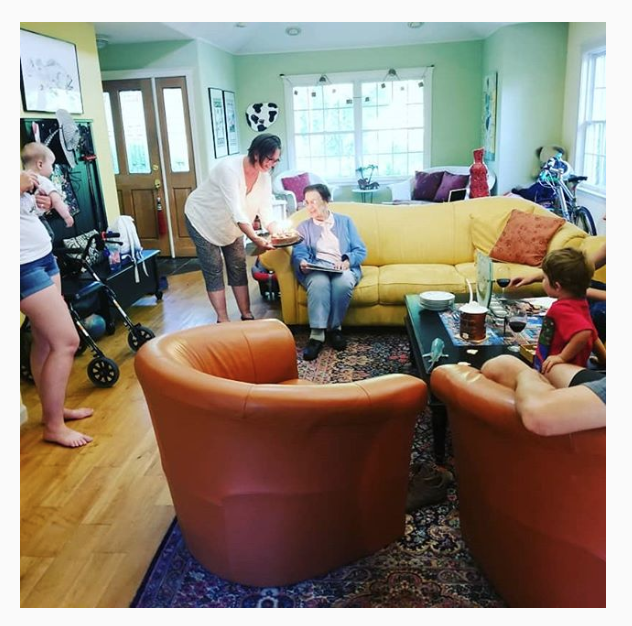
Above: A part of my little bough of the California branch of our family tree in my Davis, California childhood home: my Grandma Rosella Loux on her birthday with my Mom Kerry Daane Loux, and my sister Kati Loux and her husband Andrew Holstedt with their two little ones, Matthew and Christopher in spring of this year. If Allen and Anne Thomas hadn't returned to California after their return visit, perhaps I would have grown up in the UK.
Below: This is a photograph my relative Oscar took of his wife my cousin Julie in front of the Goat Inn in June 2018, where my great-great-Grandmother Annie Williams grew up before braving the long journey by ship from Liverpool for America's East Coast with her allegedly forbidden new husband Allen Lloyd Thomas in 1883.
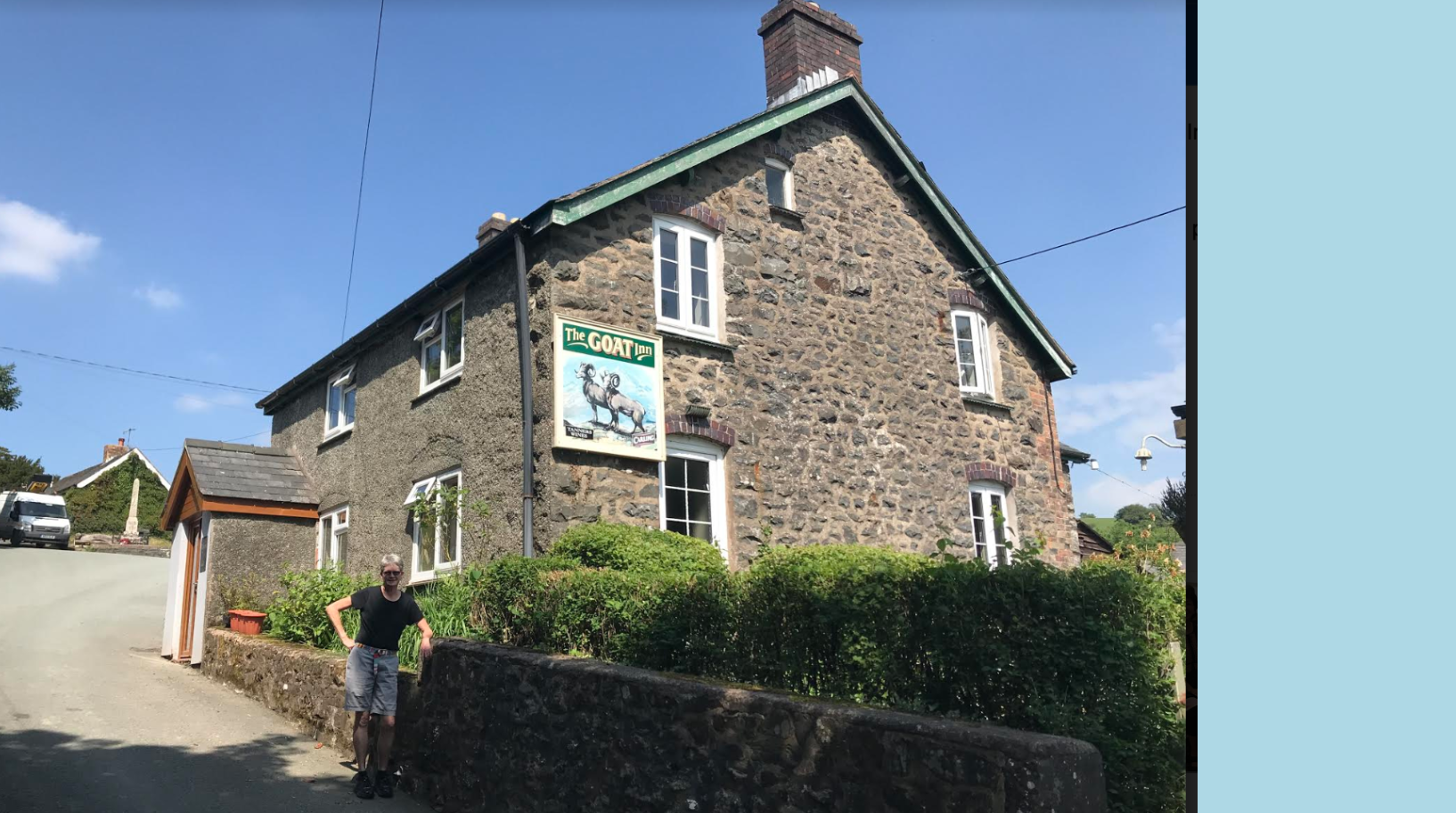
A building which has housed generations of my family still stands: it is now called the "Goat Inn" in the Llanfihangel-yng-Ngwynfa village center. My Mom and I visited it and the two cemetaries which are the final resting place of multiple ancestors when we visited the area. We searched for the Llwydiarth Hall where my great-great-Grandfather was raised as well, but never found it. We also visited the cemetery by the church of St. Mary in the tiny village of Llwydiarth or Pont Llogel and found that the columnal monument for John and Margaret Thomas, the parents of Allen Lloyd Thomas who died in the early 1900's, is lying on its side. Oscar discovered that it had been leaning and was deemed to be a safety hazard so the church hired a contractor to put it down.
"We spent two fun evenings at The Goat Inn, which is essentially 100 meters long and across the road from St. Michael’s Church and the Cemetery," wrote Oscar in an email about their trip.
They spent some time with my mom's third cousin Menna Rowlands, who is now the owner and proprietor of the Goat Inn and is also the warden of St. Michael’s Church. She is the great-Granddaughter of Annie's sister Sarah.
"The pub is essentially the front room of her house which dates back to the 1700s," Oscar said.
“The Goat” is still open most evenings between 20:00 and 23:00; Menna works elsewhere during the day.
Llwydiarth Hall is currently owned by a man named Ifan Owen, who raises lambs. The hall that Allen once grew up in has been owned by Mr Owen's family since 1965. My relatives spent time with him and his partner Lisa. Mr Owen’s mother Nesta, aged 83, well remembered a visit from my great-Uncle Roger and my great-Aunt Shirley in 1979, according to Oscar. He said that the long barn to the right of the house at has been converted to residence with Nesta living on the left and an Englishman renting the right.
Llwydiarth Hall itself is somewhat equidistant from each of the two village centers down a long narrow winding road, basically one car-width wide with no shoulders. There is no evidence at this time that the Thomas family ever owned Llwydiarth Hall, according to another relative I have yet to meet, John Thomas, who lives in Cardiff now. We have exchanged emails, but he is elderly and in the process of moving to an assisted living situation, so I will pay him a visit once he is settled.
I only found out about this interesting family story after I had applied and been accepted to journalism school in the land I didn't yet know was home to past and current family.
Last August, at the start of my Master's program, I moved to Cardiff to pursue my passion for journalism and push myself to understand new ways to fact-check media sources in the era of big data. Now I am using those skills to uncover more about the mystery of my own family tree and connecting the dots between the culture of my family from my Mom's side and many aspects of deep-rooted Welsh culture.
I first became intriuged by my Welsh heritage due to my interest in linguistics. Seeing signs everywhere in town with combinations of consonants that I'd never seen put together before inspired me to buy a small Welsh pocket dictionary.
According to the 2011 census, just 562,000 (or nineteen percent of) Welsh residents aged three years or over were reported as being able to speak Welsh. Of those that speak any of Wales' native language, seventy-seven percent were reportedly also able to read and write in Welsh. The raw number of residents able to write, communicate, and read in Welsh that year was 431,000.
Throughout the course of the year, I have become fascinated with my Welsh ancestors: My Mom and I visited the graves of possible past relations in Llagollen by the River Dee, and every time I'm at a grave site in Wales I check for "Williams" and "Thomas" on the tombstones; I've tried to pick up a bit of Welsh on the side whilst completing my masters and learning Portuguese; and this normally-mostly-vegetarian farm girl from California sampled Welsh lamb and mutton, just to understand my history.


As the academic year and the summer come to a close and I look forward to turning in my final dissertation project, I feel as if I have been on an inadvertent journey destined to reach this point. Ideas of following signs that I have developed throughout my 28 years have solidified under the influence of Welsh mythology. As T.S. Eliot wrote in the poem "Little Gidding", the final in his Four Quartets:
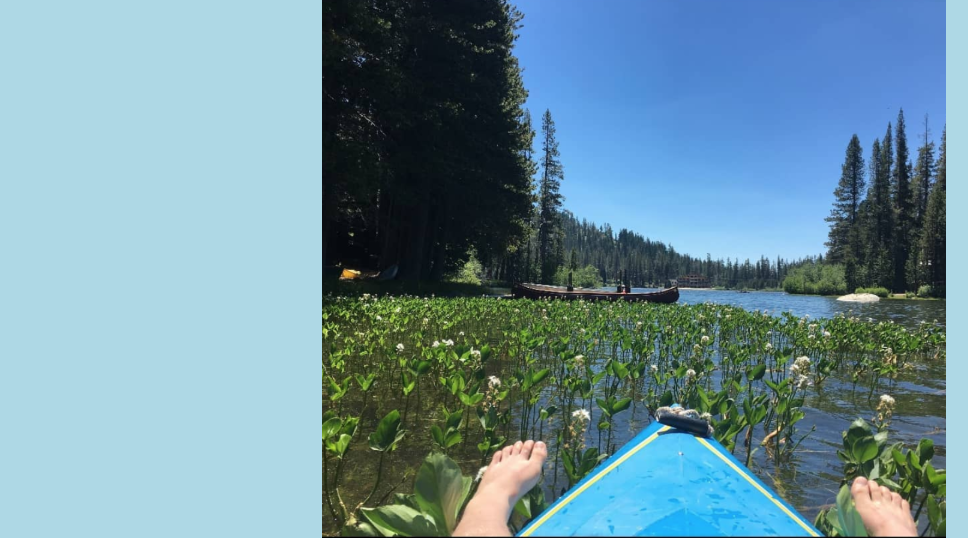
Somehow, in attempting to connect with my few Welsh roots, everything and nothing has changed.
Since moving to south Wales, I have spent a lot of time learning about ancient Welsh mythological stories and symbols, along with exploring my own connection to spirituality and symbology throughout my life.
Dreams and symbols and rites of passage were extremely important to Celtic and Welsh societies throughout history. What fascinates me about Welsh and Celtic Briton mythology is the specificity of the references to nature and the land. Like the Akan tales of Anansi the trickster spider that I loved growing up, Arthurian legend and Welsh mythology always seem to relate back to specific environments that exist in Wales, like lakes. For example, in "The Girl from Llyn y Fan Fach," a mysterious girl appears three times from the lake to a boy who falls in love with her but cannot touch her with metal or she will disappear. The key plot elements to the story involve both mystical ideas and real elements, the lake and the metals, found in nature in Snowdonia and the northern central part of Wales. It was that style of mystical realism that first attracted me to the tales of Taliesin and Ceridwen, Arthur and Morganna.
An example of my recent personal natural symbology is that I've always felt a connection with the study of geology, and recently a clear piece of polished celestite rock that was a gift from a close friend has become more meaningful to me in reading about the physical symbols of Wales' past. I hold it if I get anxious to remind myself of all the beautiful rocks and mountains I've visited and ground myself to the daily task at hand.
In his book "A Branch from the Lightning Tree: Ecstatic Myth and the Grace in Wildness", fellow American wanderer Martin Shaw described his journey of returning to his Welsh roots and searching for symbolism that could relate to his life. A former rising music rock star, Mr Shaw chose to follow the spiritual path of his ancestors and took the advice of shamans and teachers he met all over the world by returning to the land of his ancestors and seeking initiation. He lived alone and self-sustained in the Welsh wilderness for years, and began helping other people find themselves through ancient Welsh ritual initiations.
He recalled in his account the words of one of the participants named Matthew in his rite of passage groups about returning to society after initiation in the woods:
"Coming home felt wretched, it wasn't home anymore. I needed someone to see what I'd done, what I'd been through. Without that it felt hard to blossom, wilderness felt a long way away."
I can relate to this. I feel as if my academic journey, my journalistic journey and my personal journey have intertwined like the persistent ivy vines of the Welsh countryside. And as the program comes to a close and my final project is almost done, I too feel the need to express what I've been through and what it has meant to me.
My favorite phrase in Welsh is "Calan Lan" which translates roughly to "pure of heart." I look forward to embracing a purity of heart and focus as I attempt to use the skills I've gained this year to be part of the solution against the epidemic of mistrust in the media and the fear that has been so pervasive in my country these days.
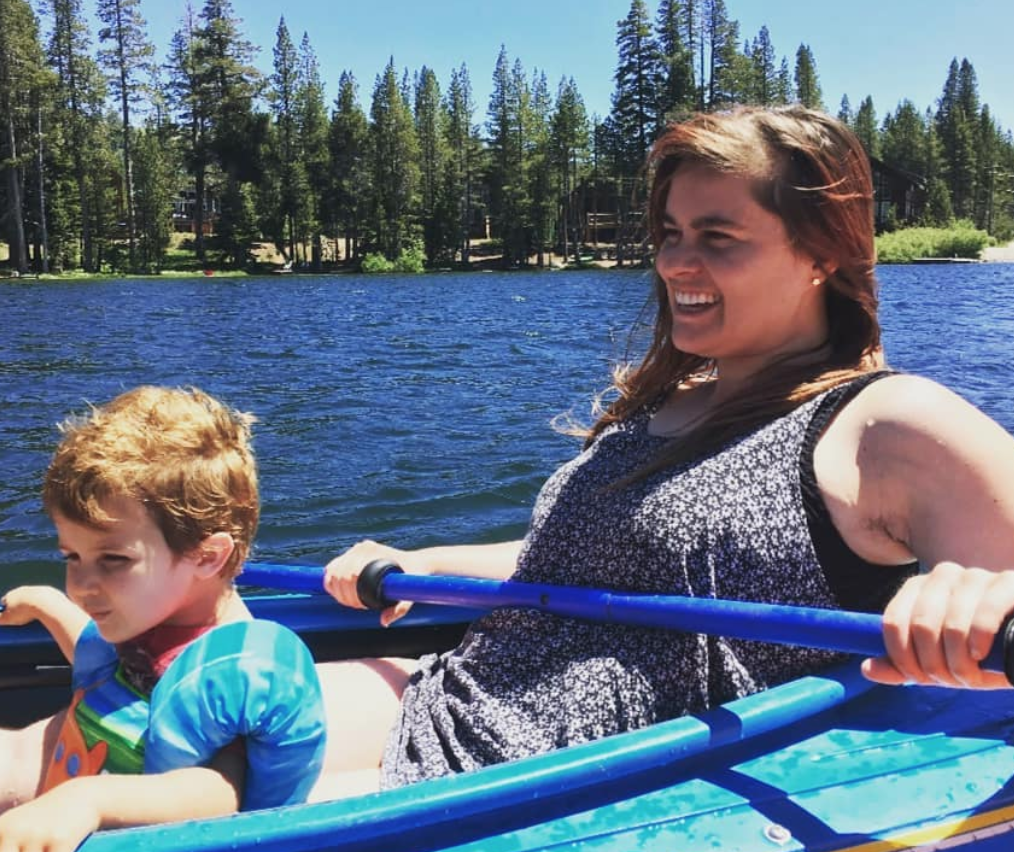
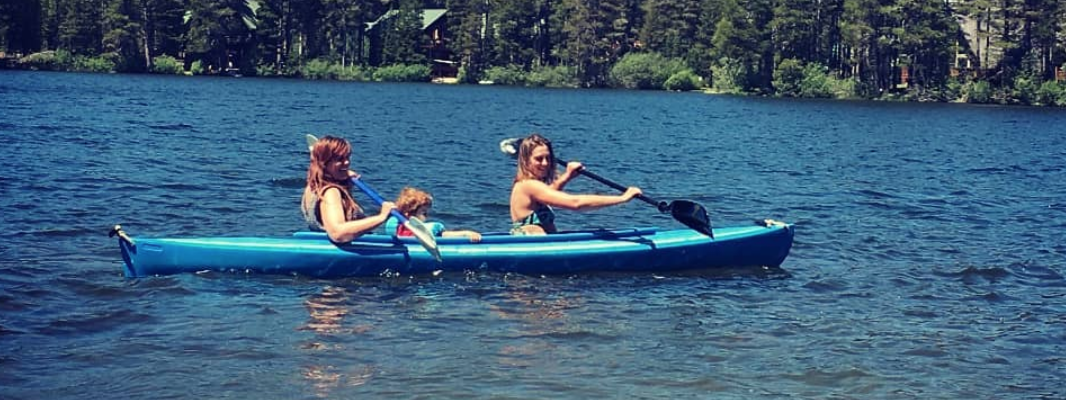
Below: Photos from exploring the Brimham Rocks with my Mom
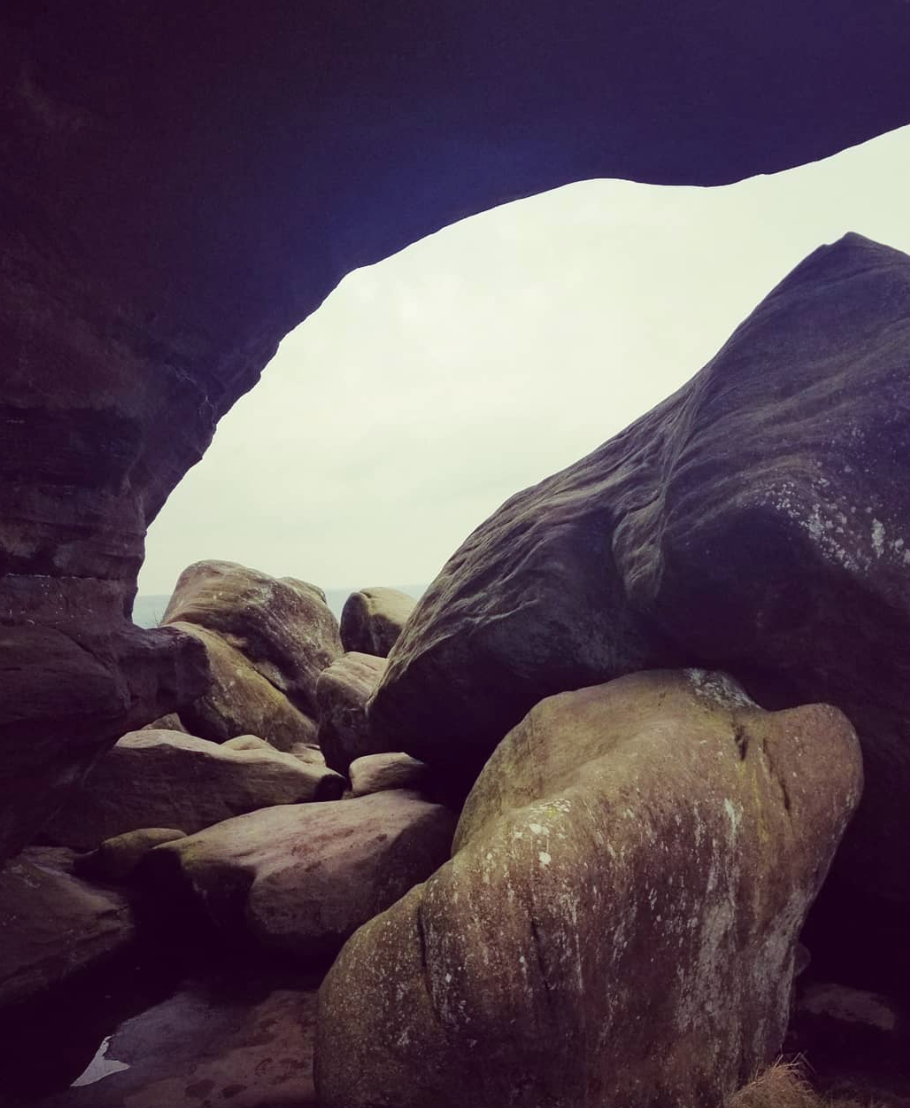
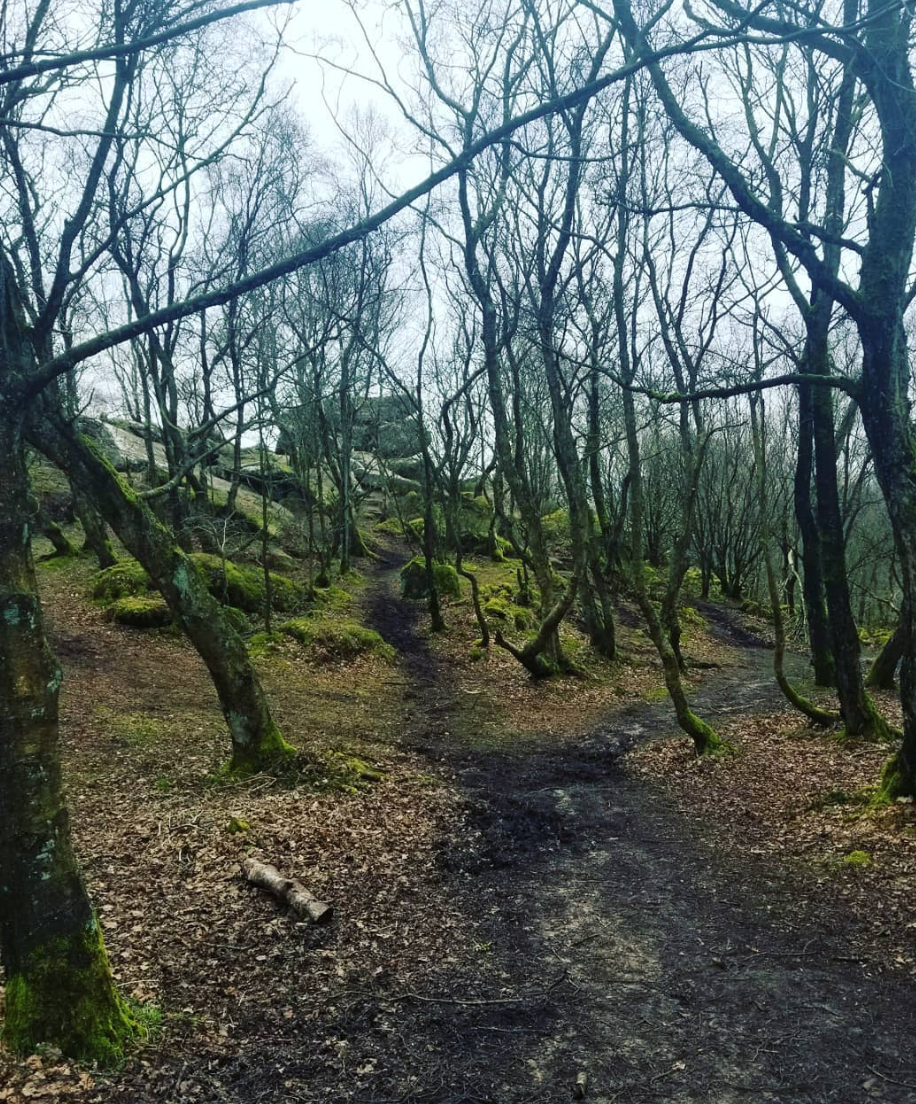
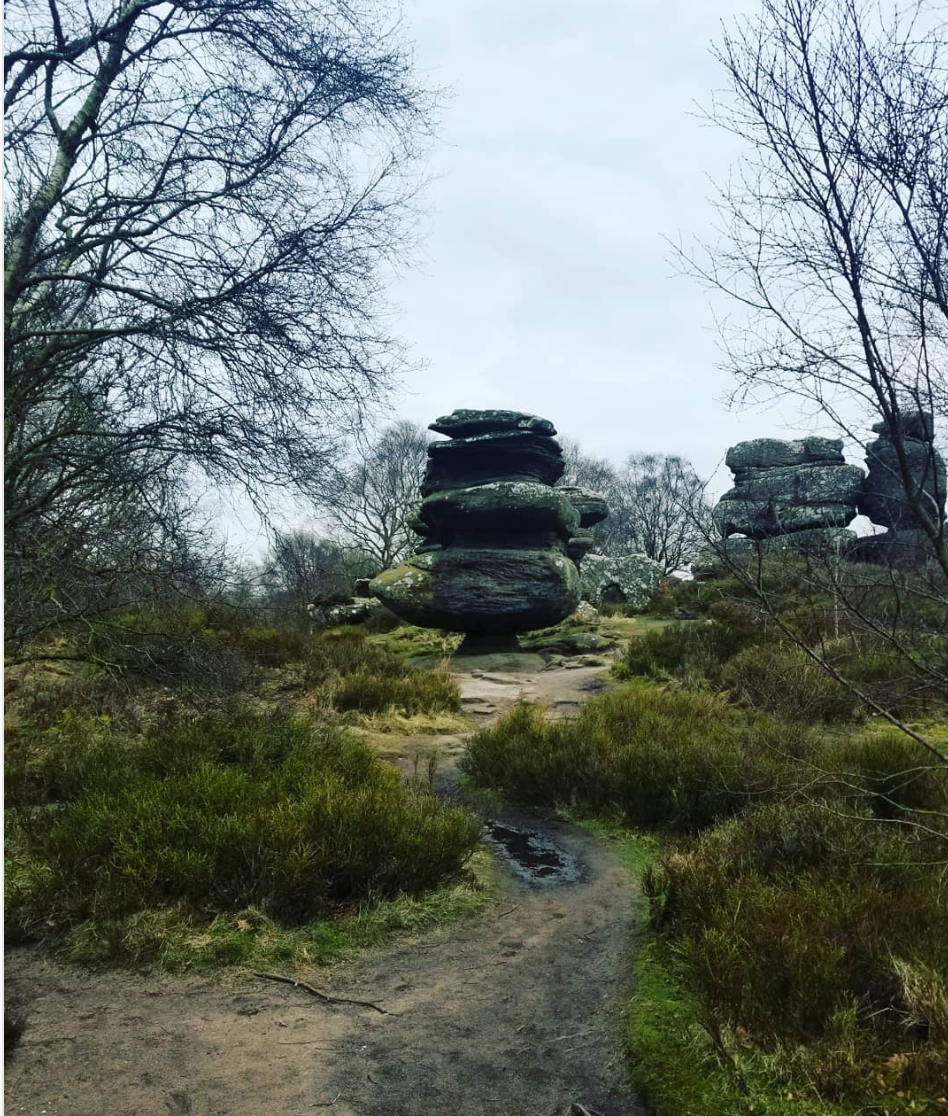
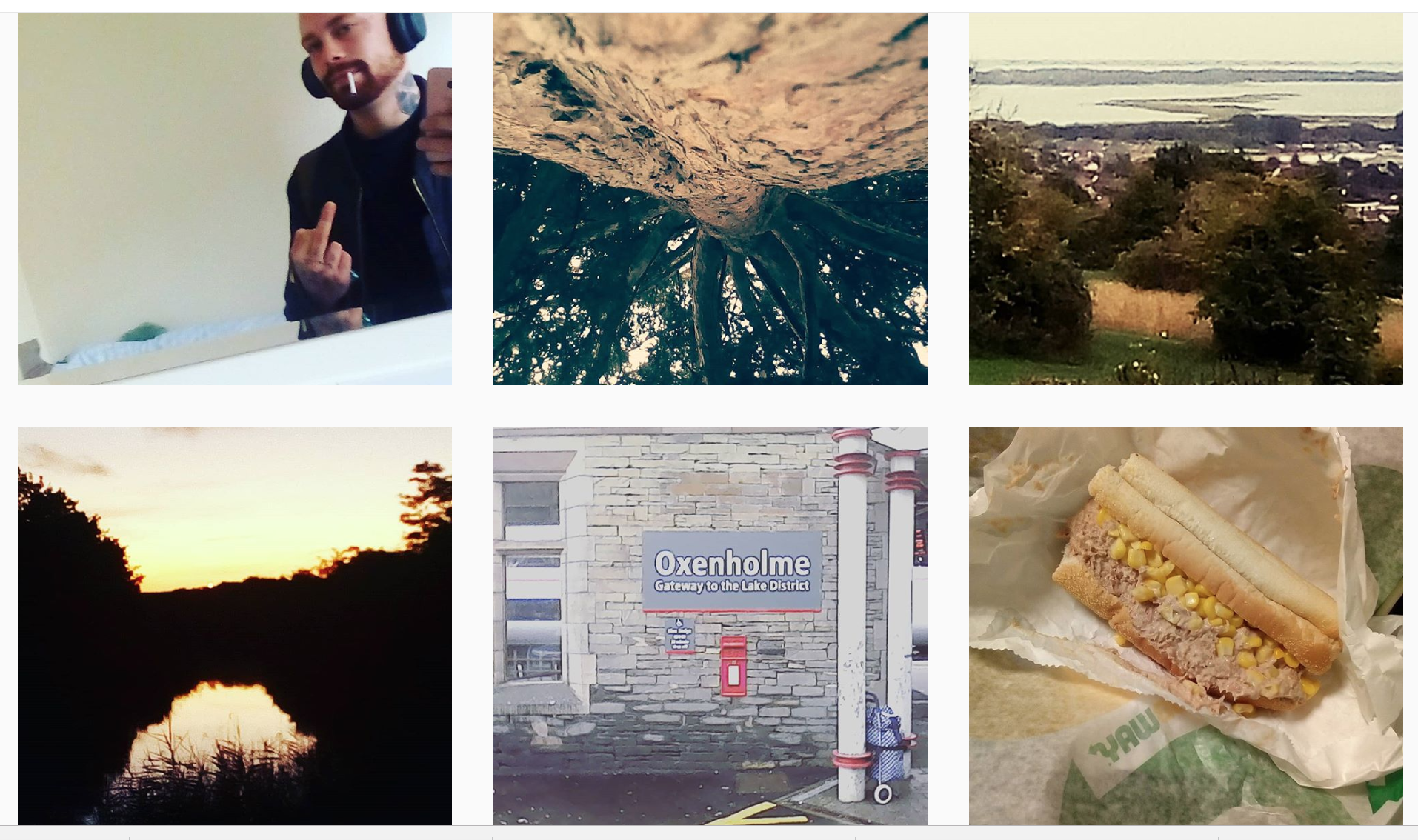
Twenty-year-old Clayton Quick, who goes by the Instagram handle “iamthelost.97”, truly identifies with his online pseudonym.
“That’s what I think of myself as," he told me of his social media handle. "A Lost Boy.”Mr Quick is a quick wit as well as instantly open and honest with me, even after I explained that I’m a journalism student on a research trip and asked his permission to quote him for an article. If anything, my potential to give his story a platform made him more ready to share unpleasant aspects of his life.
“That’s why I came down when you were watching that old Peter Pan movie,” he continued, referencing the origin of his nickname while laughing.
We were smoking cigarettes on a balcony overlooking a church courtyard at the Kendal Hostel where we were both staying in the town of Kendal in the Lake District. My research trip was coming to a close, and he had offered a cigarette and a welcome break from coding. I’d had no intention of interviewing him. Yet as we chatted, he began to describe his life story and piqued my interst when he mentioned a mysterious contraband substance which I’d heard of whilst researching for my investigative journalism assessment: "Spice."A BBC3 Documentary Series “Love & Drugs on the Streets” (July 2018) states that this synthetic cannabinoid is a powerful and dangerous substance that has been taking the UK by storm. BBC3 reports that the drug can be indistinguishable to some from some strains of marijuana or tobacco leaves.
Said to have worse cycles of addiction and withdrawal by some users than cocaine or heroin, "spice" can have dire side affects like nausea, vomiting, hallucinations or even lasting psychosis. Called the "zombie drug," the substance appears to render heavy users speechless and make them unable to engage for vast periods of time, sometimes after just one use.
According to The Sun, "the substance was declared unfit for human consumption by the very person who invented it."
Organic Chemist John Huffman invented "spice" allegedly by accident in 2006 while researching new methods for anti-inflammatory medication.
"Spice" began circulating online two years later, usually advertised as a fertilizer. Until it was banned in the UK along with certain other substances classified by the government as "legal highs" in 2016, "spice" was available over the counter.
The Office for National Statistics defines legal high as: "new psychoactive substances not controlled under the Misuse of Drugs Act 1971."
The ONS released a report on 28 April 2016 that contains data tracking deaths involving these "legal highs" in England and Wales between 2004 and 2013 by age and gender of user and type of "legal high" substance. It sites "spice" as "among the first to gain popularity" in 2008-2009.
Overall, deaths from legal highs are far less frequent in England and Wales than deaths from heroin or morphine and cocaine. A total of 76 people died in a way that involved legal highs between 2004 and 2013 in England and Wales. However, the ONS is referring to drug-related deaths where the death certificate mentioned a legal high, so some of those deaths may also have involved alcohol or other drugs. The legal high drugs themselves may not have been the primary cause of death in all of these 76 cases. Over the same 10 year period there were over a hundred times as many deaths of people using heroin or morphine (7,748 total) and more than twenty times as many deaths of people using cocaine (1,752 total) than deaths from legal highs.
However, although the deaths from legal highs is a relatively small slice of the overall drug-use related fatality pie in England and Wales, the ONS reports that it did increase over the time period for which they collected data.
The report states that the trend rose "from no deaths in 2004 to an estimated 23 deaths in 2013. There has been a marked rise between 2011 and 2013, when deaths have more than tripled from 7 to 23."
However, as the totals are small, these numbers should be taken with a grain of salt.
Mr Quick admitted that he himself has tried the stuff once or twice, but he wouldn't go near it again. He discussed a friend of his who lives with his mother and spends all his time unresponsive in the basement, where his room is, smoking "spice."
According to another source, Dennis from Bristol who chose to exclude his last name, the substance is everywhere in that city.
Above: Recent photos of Mr Quick, who told me he loves for people to discover his instagram (feel free to connect with his instagram via the first photo which is a link). He considers it to be his main way of connecting with the world since he has had a difficult childhood and has nowhere at present to call home. More of Clayton's instagram expression is displayed as the intro photo of this article above.
Mr Quick has been through a lot of hardship for such a young person. He told me about feeling alone and disconnected from family and friends. An especially painful memory involves his stepfather, who he claims was sexually abusive to him as a child. Mr Quick believes this man influenced the rest of the family to believe he was lying when he spoke out, prompting Mr Quick to run away from home as a young teenager. He painfully remembered a time when he recognized his ten-year-old sister on the street and she looked away, unwilling to acknowledge his presence.
"I am a traveller," he told me. He assured me he would be fine because he had found his way after a recent experiment with self-harm landed him in the hospital.
"I will never do that again. I know that now."
Camilo Santa Cruz-Cottle is a sandwich shop clerk and former heroin addict living in Chicago, U.S. He claims that this "spice" has spread to Chicago as well, and that it is often laced with other harmful substances like fentanyl.
"The spice gets cut with fentanyl. People have overdosed", Mr Santa Cruz-Cottle said.
Will the LD£ take over the traditional Great British Pound?
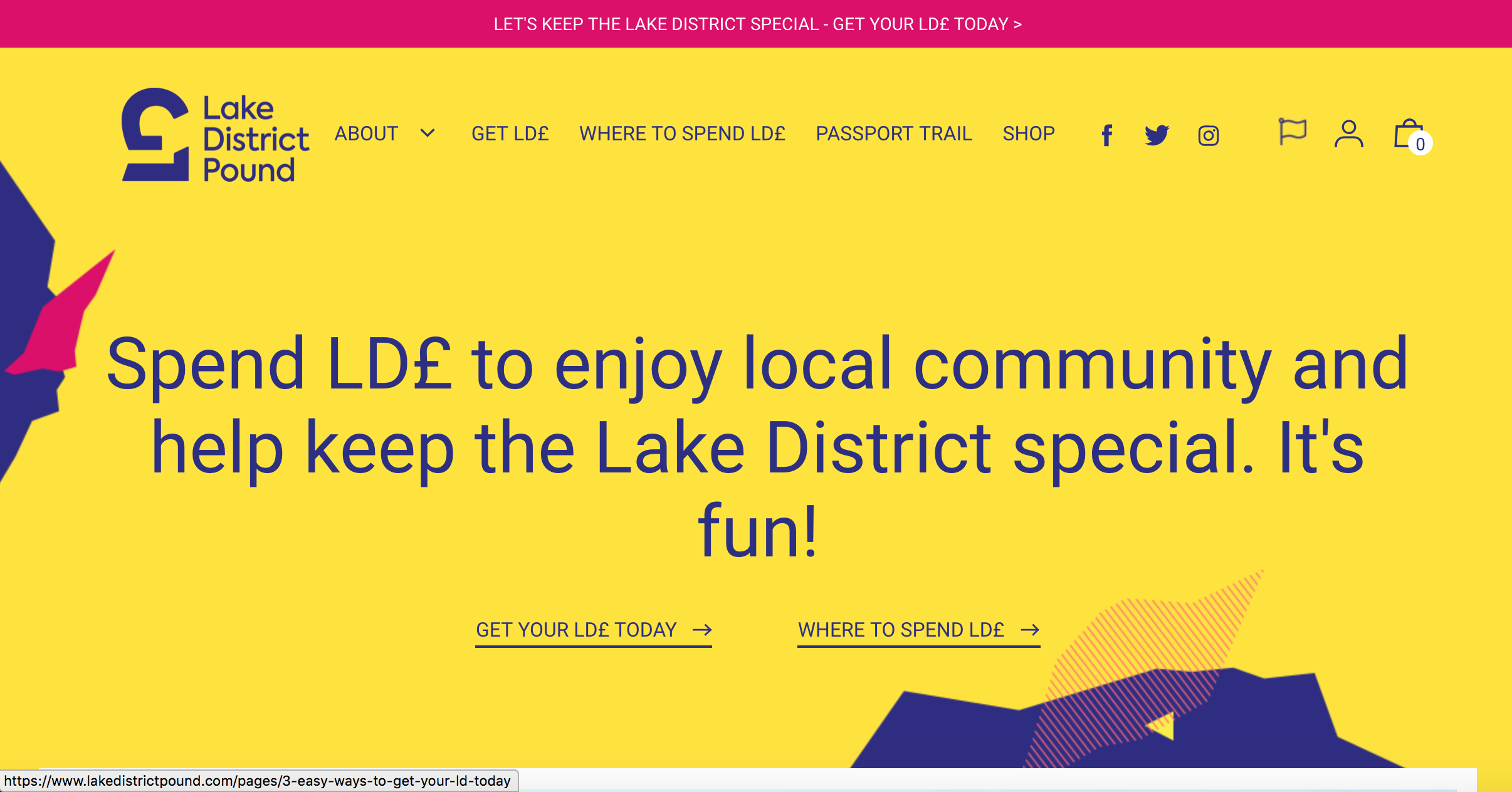
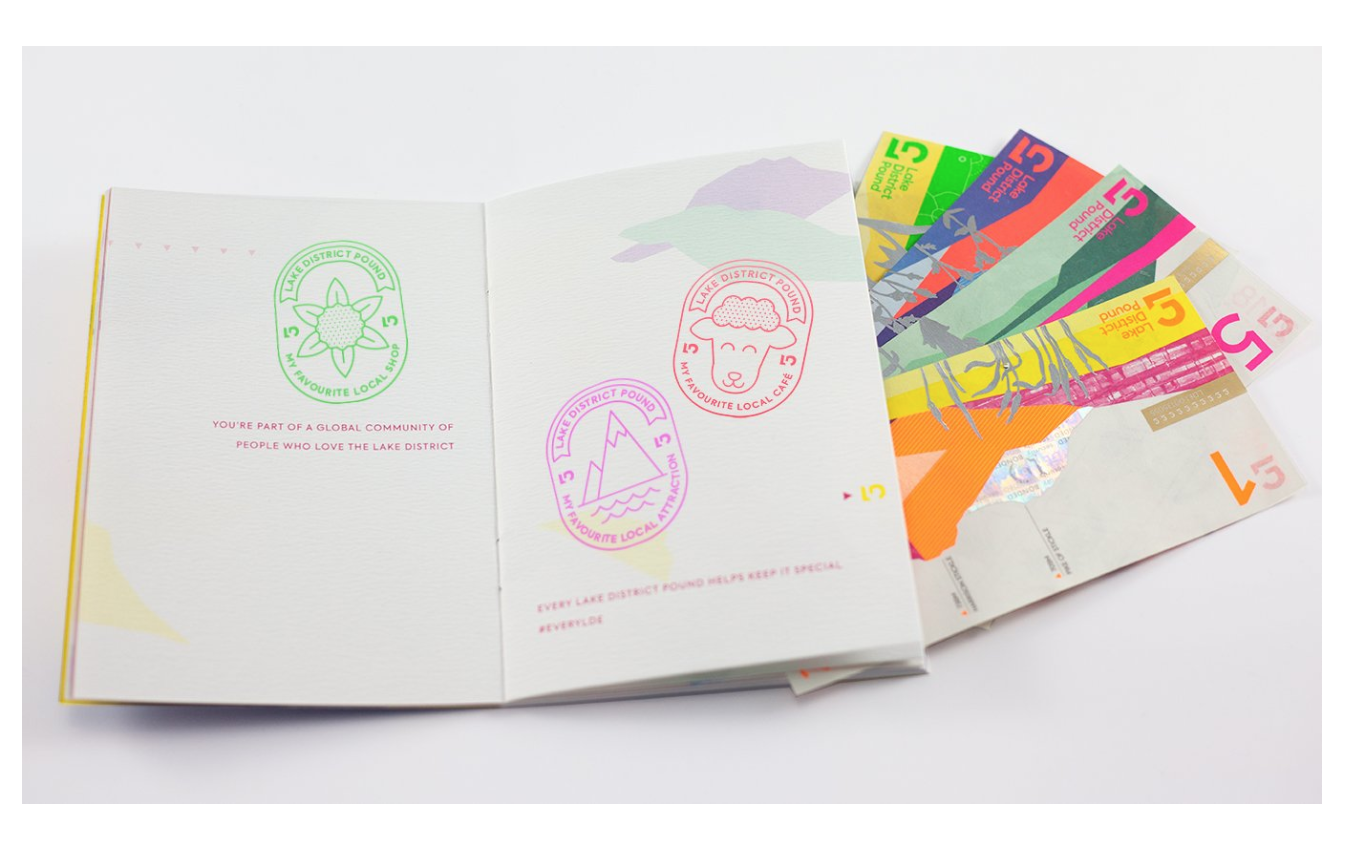
The Lake District Pound (LD£) is a local currency established this year in the Lake District. Like many hyperlocal currencies all over the world, it functions as legal tender only within the boundaries of the National Park itself.
"Lake District Pounds are worth the same as Sterling pounds. But only unique, local, independent businesses accept the LD£, so you know you're supporting our community while you spend", the LD£'s website boasts.
The exchange rate is one-to-one, so it costs nothing to exchange GB£ for LD£. According to the woman who runs the cashier stand at the Windemere National Park Service gift shop, tourists will go to extra trouble just to ask for their change in the LD£.
The Lake District Pound's official motto is: "Let's Keep the Lake District Special."
This map shows all locations within the park which accept LD£, places you can exchange traditional pounds for LD£ and locations which give out the unique Lake District passport stamps (all of which are displayed below)

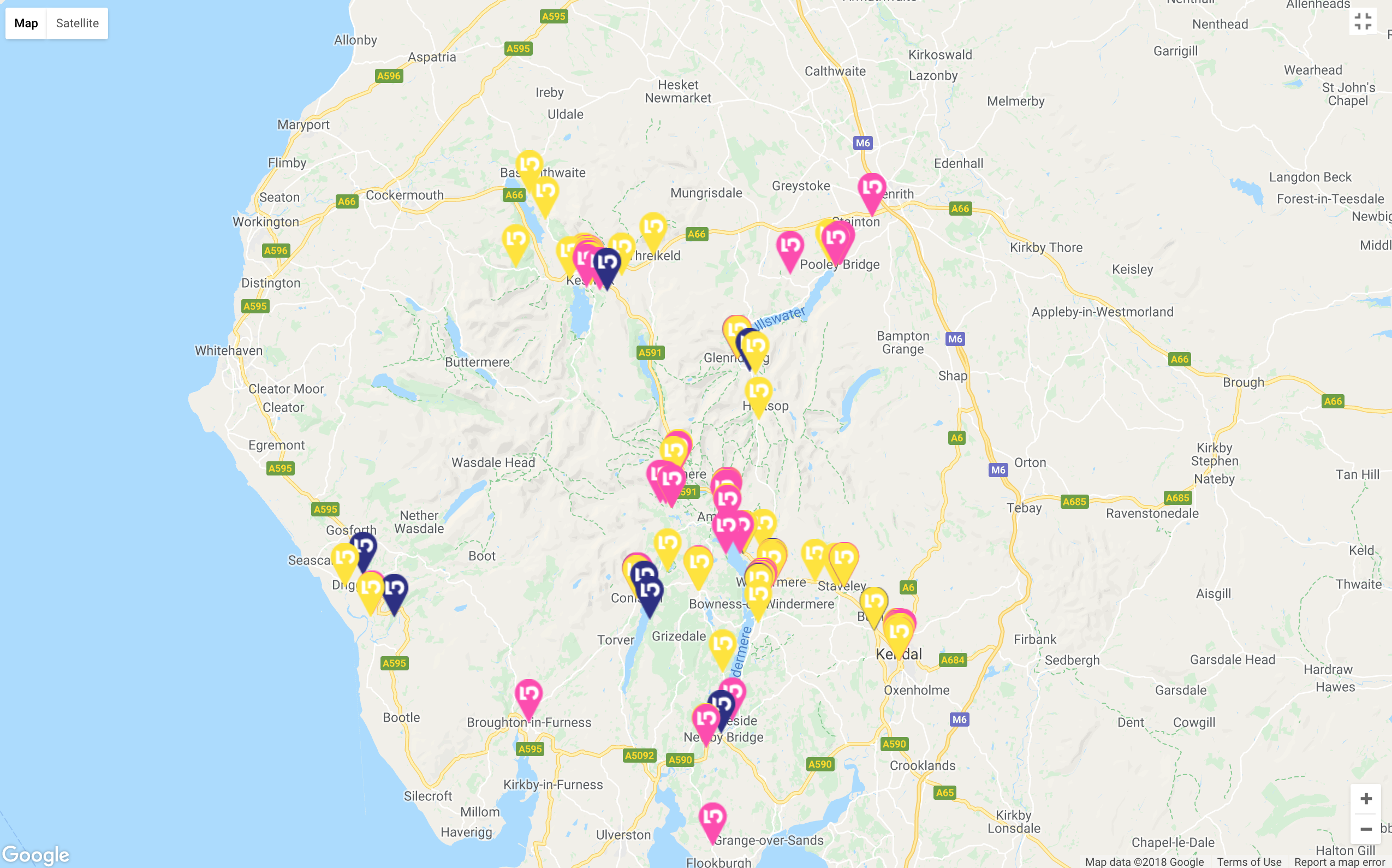
Of course, the LD£ is not unique. Small communities and regions all over the world have their own accepted currencies. Certain places in California and all over the U.S. depend solely on trade and do not accept modern currency. And Christiania, a tiny free-form society in Copenhagen which have declared themselves a separate entity from Denmark and the EU, deals in their own currency as well as a whole governing symbology and system.
The idea is not new, but the time in history is. For the first time since the establishment of the EU, the UK has also declared itself independent. Only time will tell if Brexit will lead to a decline of the GB£. Perhaps it will give way to this bright new Lake District tourist currency.
All the profits made from this project go directly to support the Cumbria Community Foundation and the Lake District Foundation so, according to their site, "your support is support for the wider community and the landscapes on which we all depend."
No data appears to have been released yet as to how many tourists and locals are already taking advantage of this currency.
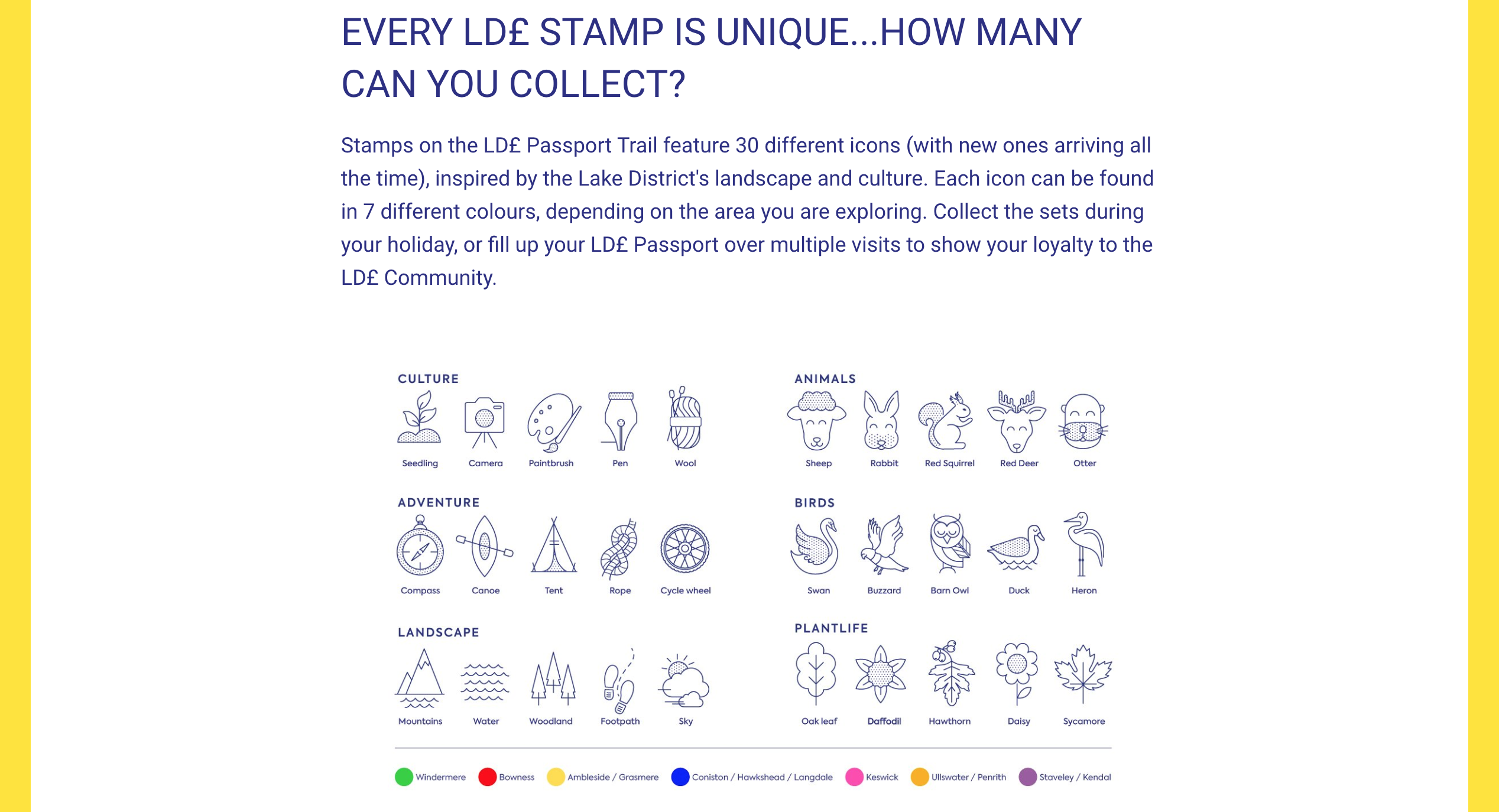
As shown above as well, people using the LD£ can also collect unique stamps on their passports throughout the park. This is a part of the larger mission of the project to keep the culture and unique identity of the Lake District alive.
All Photos in this article were taken by Sochi Ezeemo.
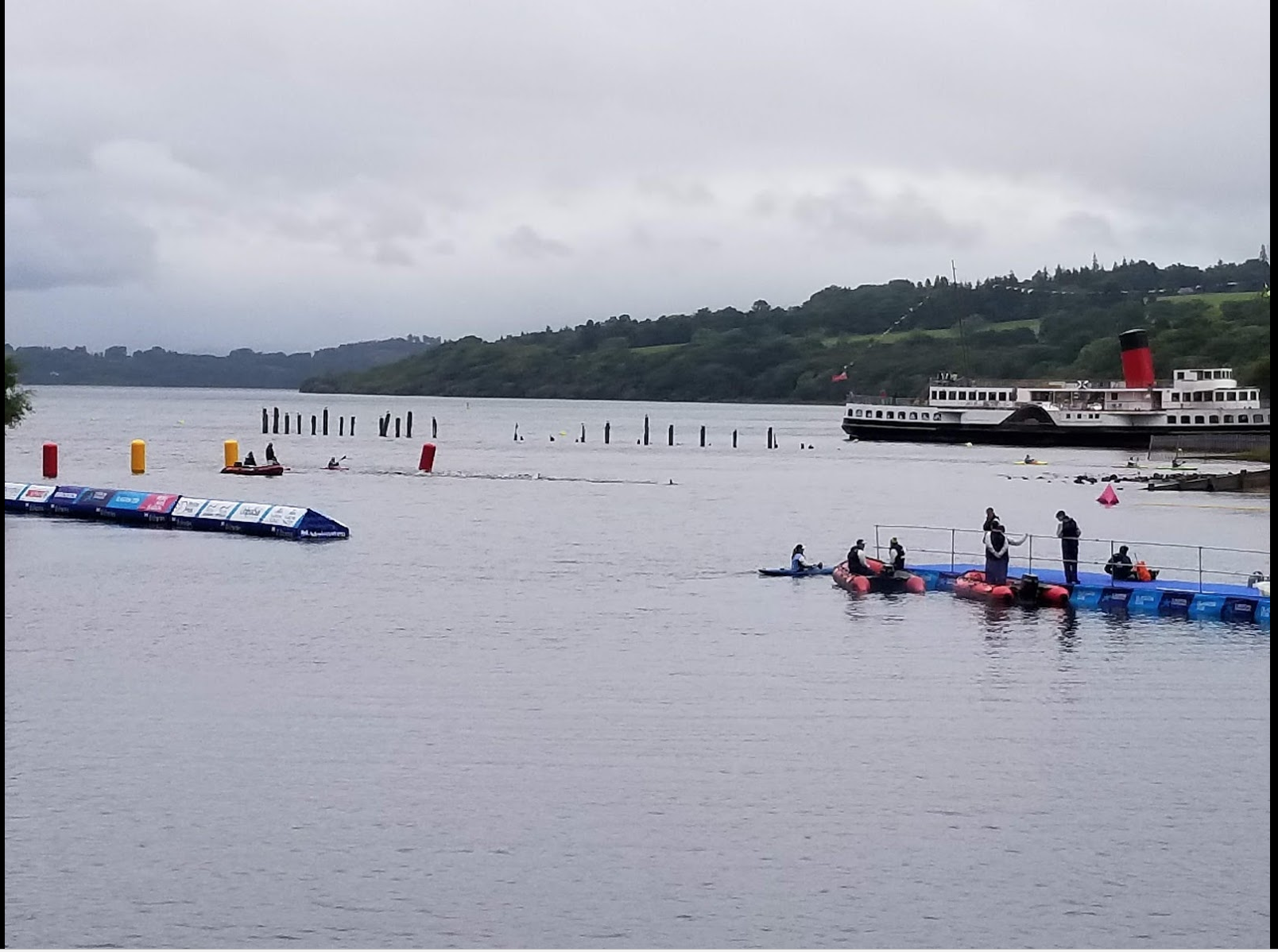
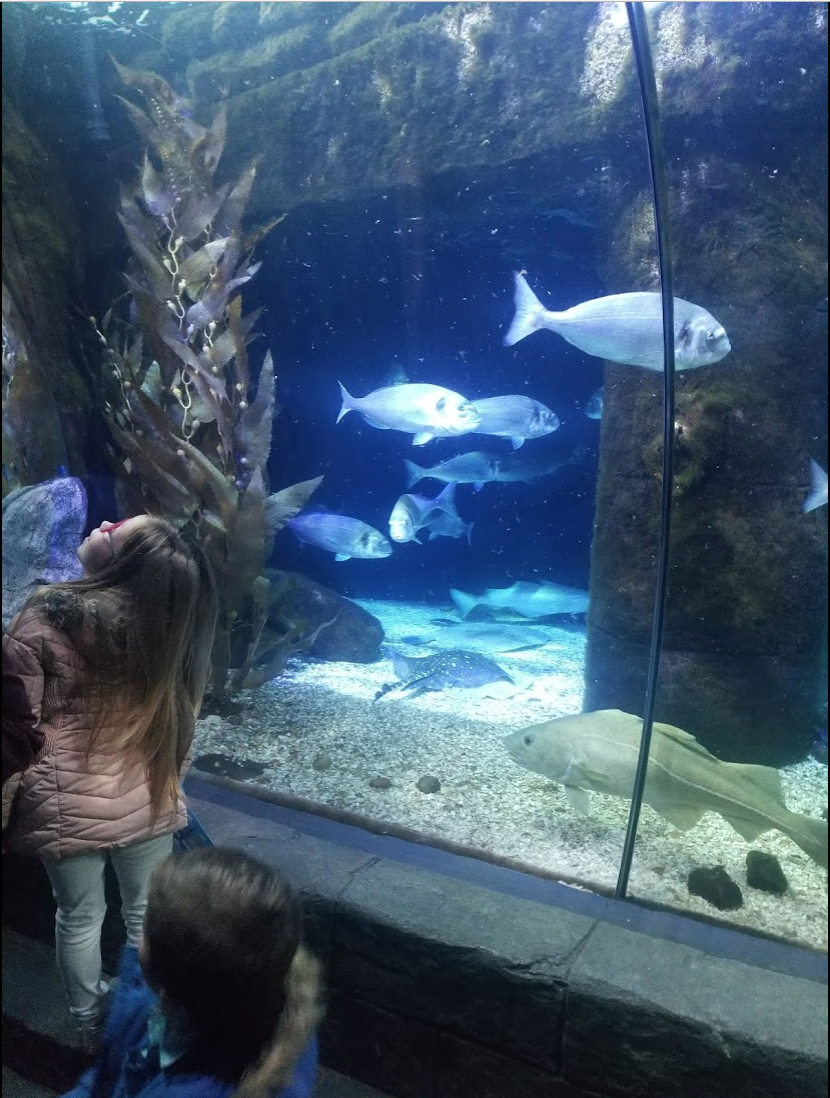

Yet that didn't stop the brave aquactics sportswomen and -men of the European Championship.The tournament, the majority of which was held this year in Glasgow, is a Europe-wide tournament of aquactics, cycling, golf, gymnastics, and rowing. You can follow the results of all the categories and learn updates from athletes by following their instagram "Glasow_2018", twitter "@Glasgow2018" or facebook "Glasgow2018."
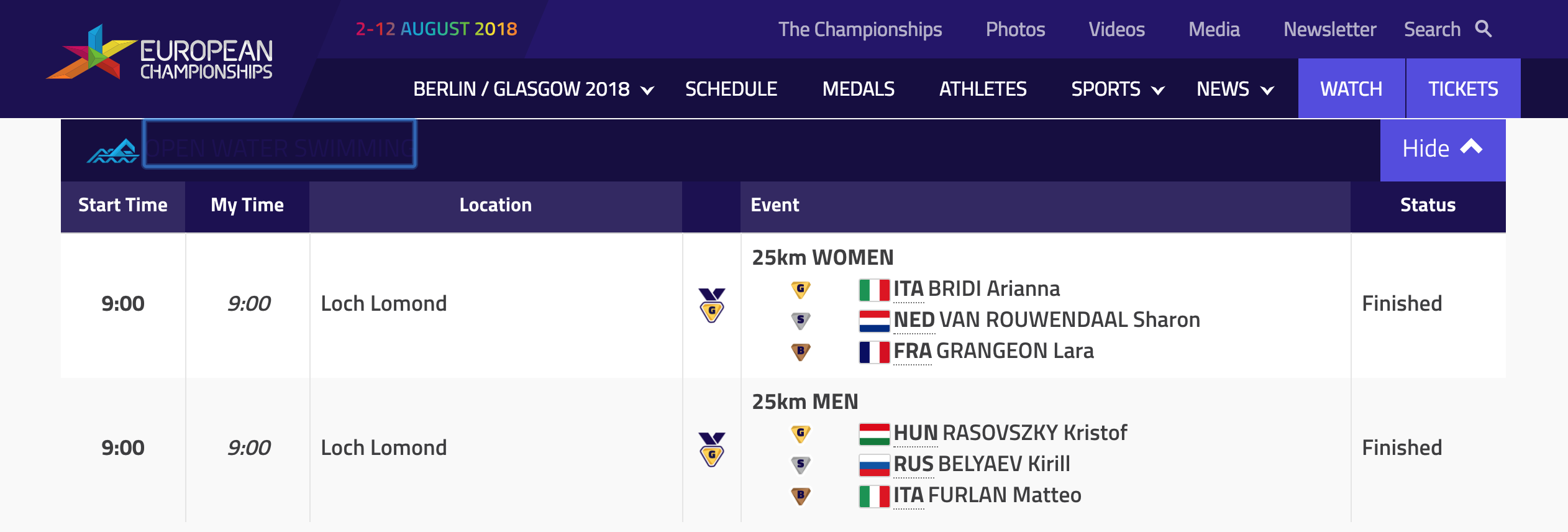
And he believes he can do it alone.

The BBC Music & Art Festival in Edinburgh is the largest of its kind. Mr Brick, pictured here during his set out on the misty lawn of the festival, was excited to bring his message which is inspired by small-town American and British Country music to a bigger scene. The photos in this article were taken by Sochi Ezeemo.
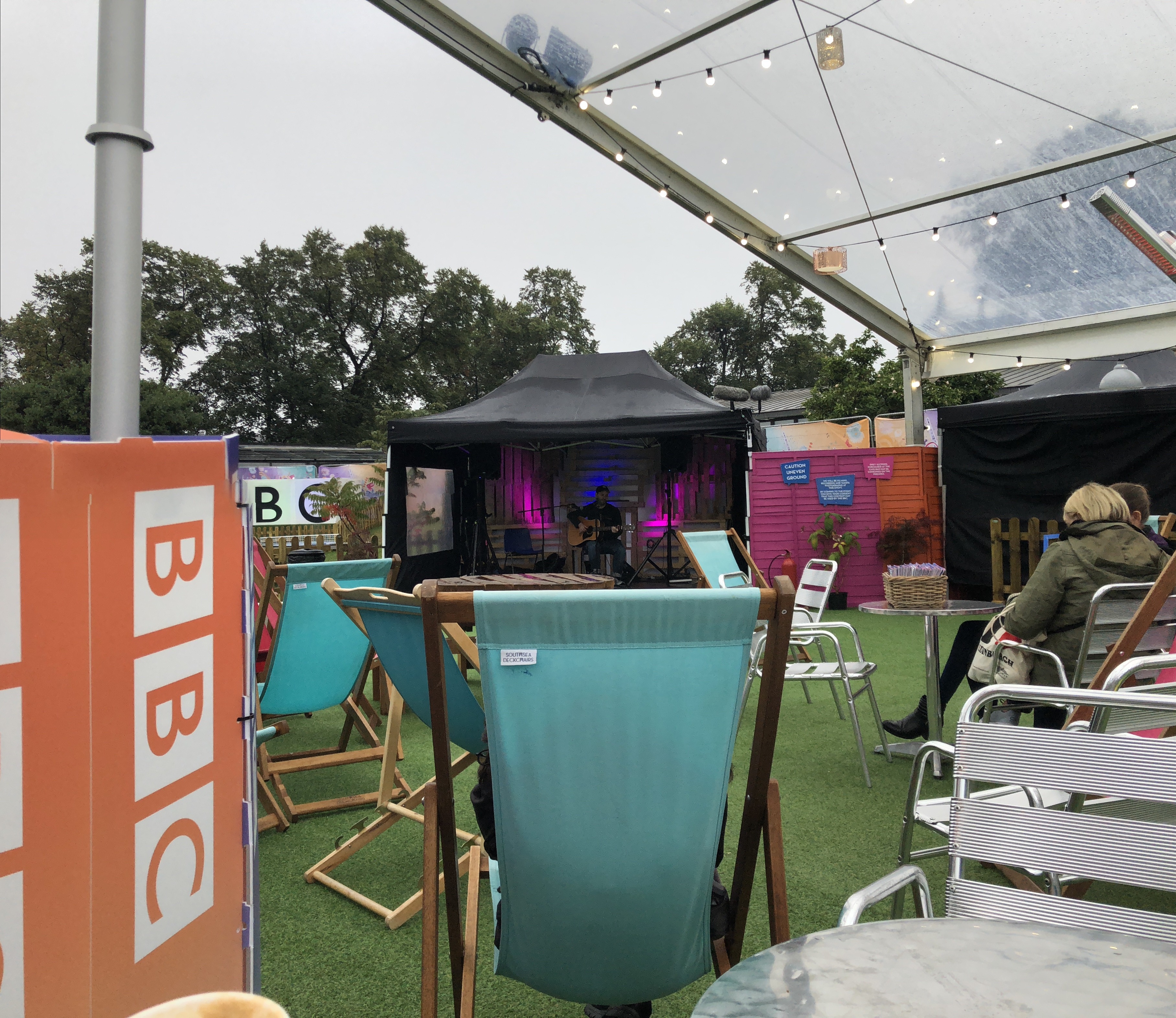
I had the pleasure of stumbling across the BBC Music & Art Festival in Edinburgh during my research excursion. At first I heard some American folk-style guitar plinkings and had a little chuckle to myself, wondering how an artist at a BBC festival in Scotland would play folk or country in an American style. My derision was initially met with validation, as I didn't find the first song he was playing particularly interesting.
Yet Mr Brick captivated me with an old cover of the kind of deep south country music that is so malleable that it can be relevant to anyone's life. I'd never heard the song before, and something stuck.
He continued to play covers I did know quite well, managed to cover "The Backstreet Boys" genuinely, and played a few of his originals.
Sochi and I ended up staying for his full performance, requesting and being obliged with an old Paul Simon classic, and being toured around Edinburgh by the country singer who had gone to university there.
Mr Brick wants to bring country back at a time when country music has been a genre blamed by the American left for the rise of Trumpism. Most musicians seem to be looking for the Next Big Thing while internet and information technology are creating entirely new communication systems every day; yet Mr Brick wants to look backwards.
"I was always a fan of the poppier side of country: Lady Antebellum, Florida Georgia Line, Sam Hunt...Of course I also knew the big ones: Dolly Parton, Johnny Cash, Elvis Presley.
In 2015 I decided to investigate country music as it is today. It has moved on from moody men in cowboy hats and is reaching out to a younger, under-30 audience. The more I listen to country music, the more I realise the focus on the song is what drives the genre. Some of the best pieces of pop music I hear are in the country vein: it might not be full of strings and banjos, but a lyric with deep gravitas and sentiment is a winner for me. Usually the words are married to a catchy tune and sung by a sweet voice, so the package is excellent.
As country music comes to the UK seemingly every week, with two big markers every year in March (Country2Country) and October (Country Music Week), more folk are being drawn to the genre and discovering, as I have, that there are many different types of country music: rootsier sounds, radio-friendly sounds with electronic beats, singer-songwriter ballads. There is something for every taste and some of it stands up with the best of the last century. Hearing more country has helped me learn about the American South and appreciate the dominance of country sounds in Tennessee, Florida and Georgia. These may be Red states but country music goes beyond politics, particularly as at the top level it's about money and record sales and concert tickets and brand awareness. It remains a fine product beloved by people in LA and Louisiana."
On what Jonny believes his sound can add to the country scene:"With a keen ear for melody and harmony, I can bring 30 years' experience of listening to pop sounds to the market. I tend to write songs with a melodic interest, such as a fun chorus, or a lyrical interest, whereby I use an odd word like 'trampoline' or 'trousers'. By synthesising what I hear from other inspirations - chugging guitars, half-sung, half-spoken words and anthemic power-pop choruses - I hope to bring an audience weaned on rock and pop to country, then embrace the traditional style which is a strong part of the country brand. Truth and emotion are paramount, as you cannot fake country music."
On his own lyrical writing style:"Sometimes I write personal songs, or imagine a situation and spin a story out of it. I'm finding at the moment I am composing sets of lyrics about the beginning of a relationship, though I can be bittersweet when writing about the end of one. Often I pick a title and use that to frame a story, or stumble into a good line.
I'm working on a song at the moment with the title 'You get your way, and I'll be on mine', which is a play on words. I could build a story around a relationship with three verses standing for three acts in a playlet: the term 'three-minute movie' was invented for country songs.
I always have a listener in mind and tend to fill every syllable in a line if I can, following the Max Martin 'melodic math' approach where lines must cognate with each other as far as possible. It's crucial to pick the right word for the right moment, or emphasise certain lines for maximum effect. I tend to steer away from 'oohs', 'heys' and 'woahs' which may improve a song in the live sphere, though I do have a song which uses 'ba-ba, ba-ba' to replace the words which the protagonist cannot 'find the words to say "I love you"'.
If anything, that's a musical joke which I feel the listener is smart enough to get."
"No Rush Hour" Lyrics:
Put on the prettiest item in your wardrobe
Put on those jewels that some guy bought you for a fortune
Fit your ample thighs inside that dress
And we'll upgrade to the honeymoon suite - though we haven't got married
We can have an hour, without our trousers on - go fling them anywhere
Chorus:
It's like I'm sitting in the car going nine miles an hour, top down we don't wanna go 90
Gonna hang out just the two of us, I love you more than slightly
Watching the world go by, so glad that you're by my side
Even when we're in gridlock, we're already where we wanna be
It's no rush hour - we don't care when we get there
Gonna take some time to tell you how I feel in my lane
Like the Backstreet Boys said, won't you "quit playing games with my heart?"
What a start if we sit here in traffic
Feels absolutely magic when we just get to be...
Have another hour without our trousers on - go fling them anywhere
Repeat chorus
Ooh, flying by your side
Ooh, my eyes have been opened wide
You tell me all your stories about some other guys
Don't know why I didn't come into your life
Repeat chorus